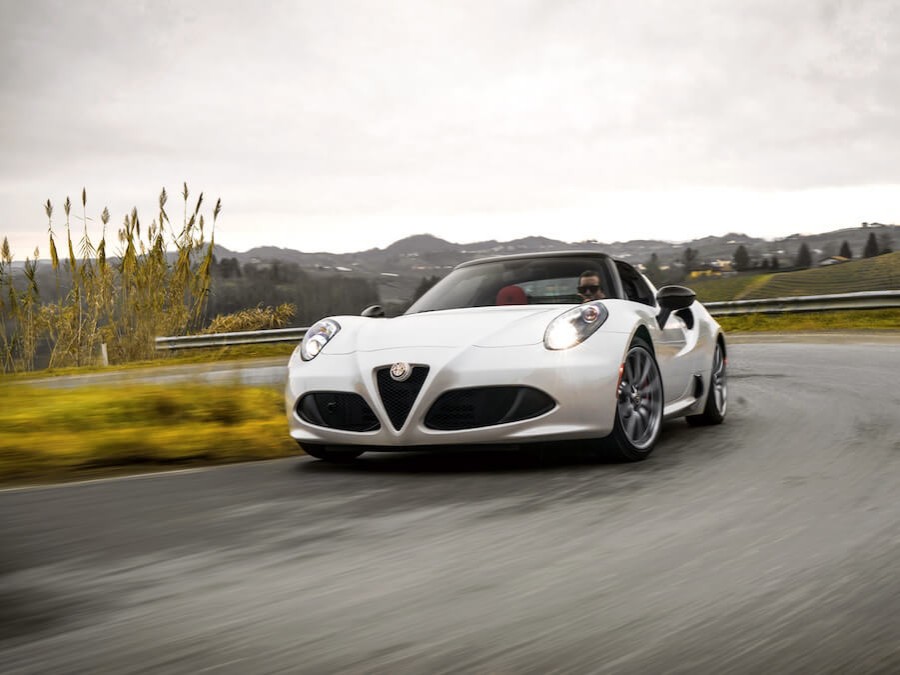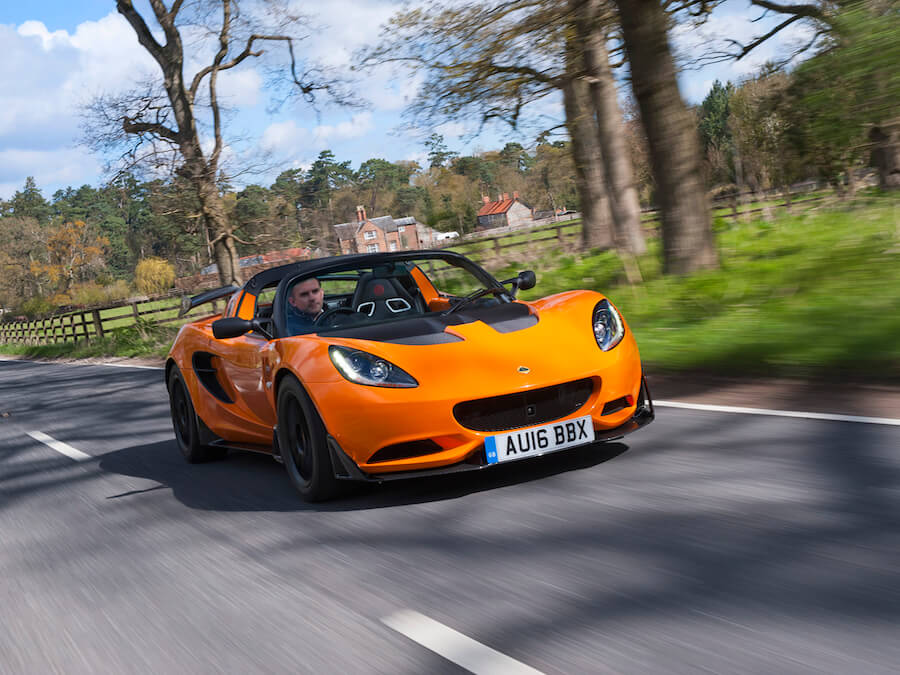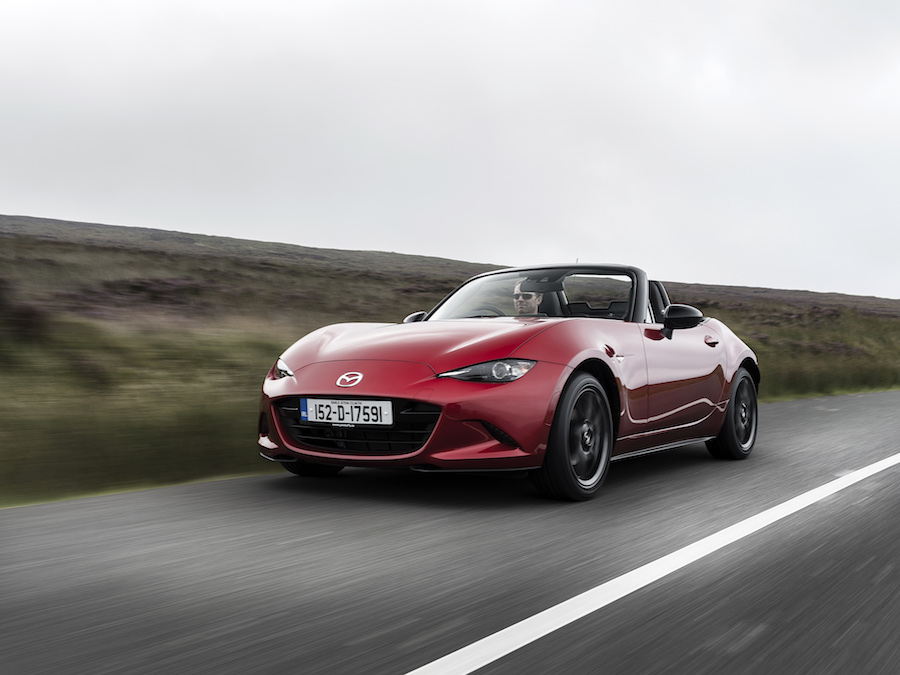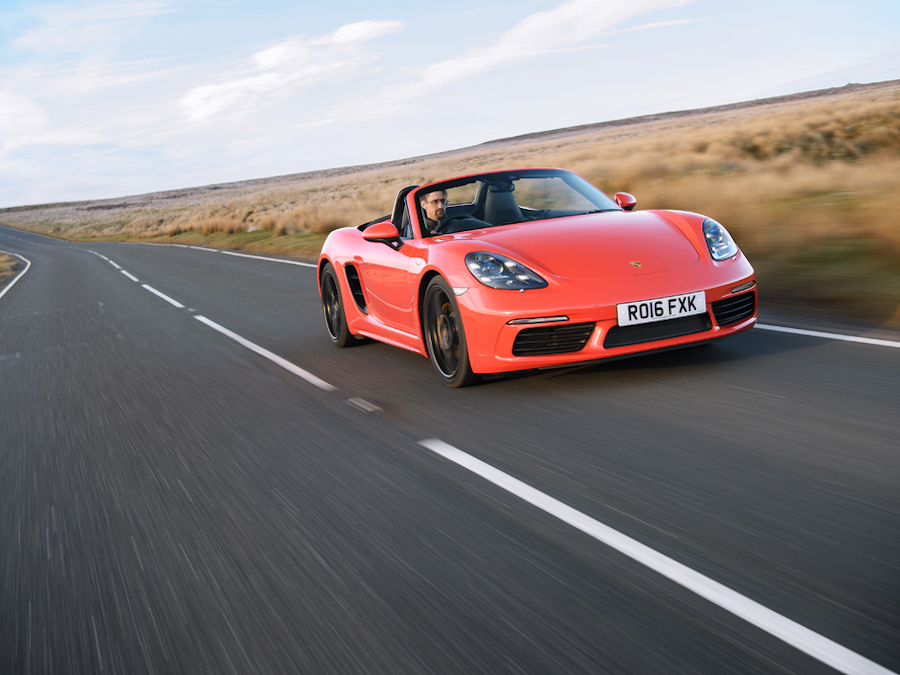When the Alfa Romeo 4C was first launched, we were pretty blown away by it. Gorgeous styling, exotic carbon fibre construction and a Lotus-like obsession with weight reduction whet the appetite, while a turbocharged engine gave the little coupe serious performance. Now there's an open-topped version, the 4C Spider, with the recipe unchanged. Alfa Romeo also took the launch of the roadster variant as an opportunity to tweak the car. We flew over to the UK to drive a right-hand drive example deep into the Brecon Beacons in Wales. The sun even shone.
In the metal
Time has not dulled the allure of the Alfa 4C's design. It's such a pretty car and it looks even more dramatic in real life as it's tiny. The low height and short proportions emphasise how wide it is, looking every inch the junior supercar. The Spider gets new Xenon headlights that look more conventional than the odd LED units fitted to the original 4C coupe and at a glance there's not much else different other than the fabric roof section. In fact, the rear deck is all new, with a vented engine cover and curvy buttresses either side. The roof itself is quite fiddly. It doesn't take long to master removing it, and that can just about be done while sitting in the driver's seat (if you stretch), but putting it back in place takes practice and patience. And you need to be outside the car.
With the roof removed and stowed in the small boot behind the mid-mounted engine, it's much easier to get in and out of the 4C, though the carbon fibre sill is as wide as ever. As you'd hope, you sit low down with your feet straight out in front of you and the dinky steering wheel close. The strange shape of the wheel hasn't been changed, but thankfully it feels better to hold than it looks. The seats are firm, though prove to be comfortable over a long day of driving. Storage is at a premium inside the cabin, but at least there are cupholders and somewhere to put your phone while driving. One upgrade from the original 4C is a leather covering for the dashboard, here with yellow contrast stitching. It lifts the appearance of the interior, though it's still best described as 'minimalist'. That extends to the instruments too, taken care of by a small TFT screen in front of the steering wheel. It works well on the move. There's a stereo too with Bluetooth connectivity, but don't expect to hear it when you're driving even moderately quickly...
Driving it
The Alfa 4C is utterly different to everything else the Italian company makes that it may come as a shock to the system for anyone jumping out of a regular car to take it for a spin. Everything is immediate, from the assistance-free steering to the hard brake pedal and fast, smooth full-throttle gearchanges from the dual-clutch automatic transmission. Put your foot down and you can hear the turbocharger whistle from behind you as it spools up to speed and the car slingshots forward. Once you've got over the initial distraction and attack on the senses, however, it's clear that things could be a little better. While the 4C is never, ever what you'd call tardy, there's a distinct delay in full power delivery as the turbo comes up to speed. It makes meting out part of that power difficult, on the exit of a long sweeping corner, for example. What's more, though the steering is direct and seemingly full of information, you can't actually sense how much front-end grip there is. That's worrying, even if there's usually more grip than any sane person could ever need.
Naturally, thanks to the position of the engine behind the passenger cell, there's massive traction under power, so there's little danger in using full throttle early on the exit of a bend - in the dry in any case. In the wet, the chassis moves around a little more, which will either scare the crap out of you or thrill you depending on your skill level and mind set. The various driving modes help, as A for All-weather softens the throttle response and gearshift strategy, N for Normal is fine for everyday use and D for Dynamic sharpens everything up for when you want to have a little more fun. There's also a 'Race' setting that reduces traction control, though as mentioned, there's so much traction in the dry that the electronics are troubled only if you provoke the rear end. It's quite stable at speed and under duress.
Bizarrely, despite its ability to shrug off excesses of throttle and speed, the 4C has a tendency to be oversensitive to rutted road surfaces. On our way back from the mountain driving, we used a section of the M4 motorway in the UK and the inside lane is quite worn from years of trucks pounding along it. The 4C seriously struggles here, with a tendency to weave around the road unless you're holding on tight to the steering wheel and keeping it in a straight line. It takes much more concentration than it should just to get from A to B, even for a driver-focused sports car. Some will say that's a good thing, but surely driver engagement can go hand-in-hand with straight line stability? This chassis is flawed as it is, though it's still very much an occasion to drive the 4C. The Spider is virtually no different to the regular 4C in that way, just with extra wind buffeting in the cabin if you have the roof off...
What you get for your money
This may seem like a harsh rating, but no matter what way you look at it, the 4C Spider is incredibly expensive to buy. Sure, it has the USP of a carbon tub, that Italian heritage and styling, but as mentioned above, it isn't as well-developed as we'd like. If you're a driving purist, you'll prefer the (cheaper) Lotus; if you want a cracking all-rounder, you'll go for the (cheaper) Boxster S; and for most, the Mazda MX-5 will do everything they want. For the price of the 4C Spider you could buy THREE examples of that car. Now do you agree with our rating?
Summary
It pains us to say that the 4C Spider really isn't a great car. It's way too expensive for a start, but no doubt there are plenty of car nuts out there that don't really care about the price. Worse than that, though, is the wayward handling. It's fun when you're pushing hard, but never communicates with the driver enough and it's alarmingly uncontrolled at times if the road surface is not smooth. Despite all that we can't help but love the fact that Alfa Romeo still makes this car.



























